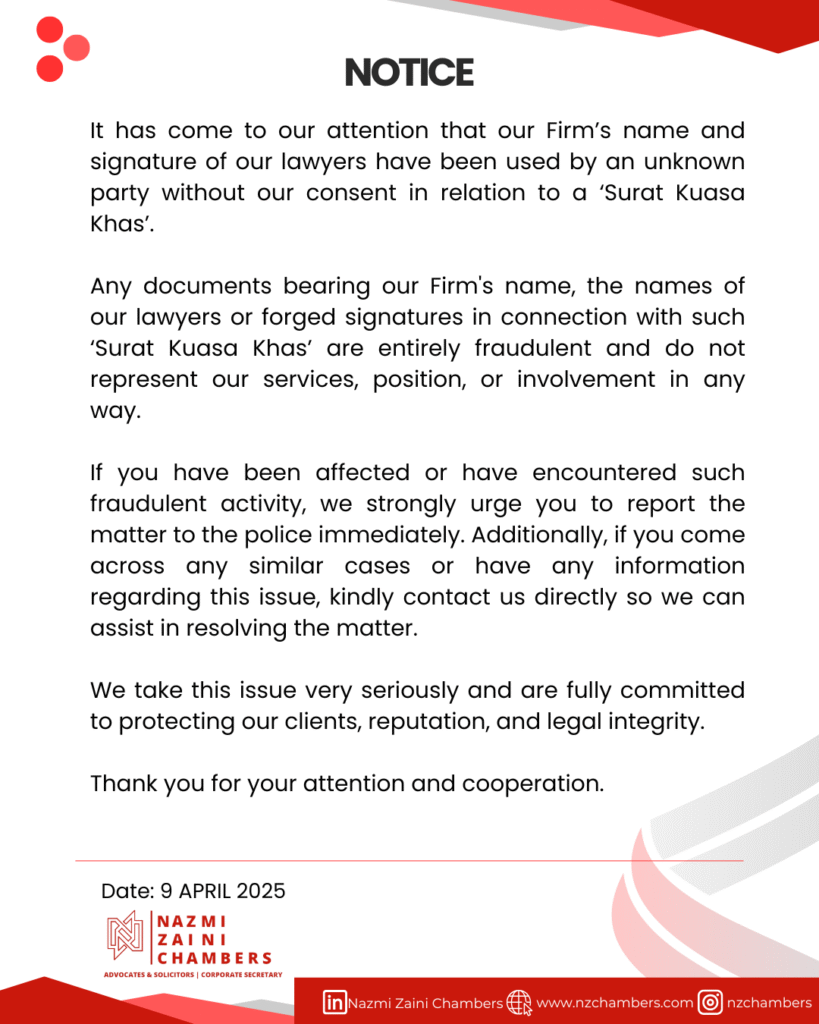Introduction
Although the law of negligence is not something foreign to the legal fraternity, the tests or principles to conclude a tortious act has been evolving throughout time. In the majority of tort cases, one of the determinations on whether a defendant is liable for a tortious act towards the plaintiff is whether the defendant has a duty of care toward the plaintiff. The landmark case for duty of care was Donoghue v Stevenson [1] which has been referred to numerous times for laying down the twofold test which includes the ‘neighbour principle’ as well as the foreseeability test in tort cases. Later on, the House of Lords introduced the threefold test in Caparo Industries plc v Dickman [2] which has three criteria to be fulfilled before a duty can be said to be owed by a defendant.
Development on Duty of Care in Malaysia
In Malaysia, the application of the test to ascertain the existence of a duty of care differs according to the fact of a case. In Uniphone Sdn Bhd v Chin Boon Lit & Anor [3], it was held that the combined decisions in Donoghue v Stevenson; Peabody [4] and Yuen Kun-Yue [5] which led to the threefold test in Caparo Industries, applies in Malaysia. Thus, following Caparo Industries, the test in determining duty of care is no longer limited to the foreseeability of damage alone, but further requires consideration on the proximity of the relationship between the parties; and whether in the circumstances it is fair, just and reasonable to impose a duty of care. However, in Arab-Malaysian Finance Bhd v Steven Phoa Cheng Loon & Ors [6], the Court of Appeal did not refer to the threefold test as the foreseeability of such loss on the basis of neighbour principle was already sufficient.
Tenaga Nasional Malaysia v Batu Kemas Industri Sdn Bhd & Anor
There has also been a new development in determining the test for duty of care in Tenaga Nasional Malaysia v Batu Kemas Industri Sdn Bhd & Anor [7]. In this case, the Plaintiff, Batu Kemas Industri Sdn Bhd (“Batu Kemas”) operated a factory using electronically controlled machinery. The First Defendant is the Public Works Department who has appointed Markas Perdana Sdn Bhd to carry out construction works nearby Batu Kemas’ factory while the Second Defendant is Tenaga Nasional Berhad (“TNB”) which supplied electricity to Batu Kemas’ factory.
The Plaintiff brought a claim against the Defendants due to the loss suffered from the power disruption resulting from the Second Defendant’s underground cable during the installation of the guard rail column by the First Defendant. At the first instance, the Judicial Commissioner found that the Defendants were not liable for the Plaintiff’s claim. Unsatisfied, the Plaintiff appealed and it was held by the Court of Appeal that both the Defendants were liable as the First Defendant owed a non-delegable duty of care to the Plaintiff and the Second Defendant has failed to reasonably foresee that disruption of electricity will occur when they become aware of the underground cables. In the appeal to the Federal Court, it was held that the liability for damages caused by power failure or disruption is the liability of tort under common law and the electricity suppliers have a higher standard of care expected for personal injury cases. It was, however, held by the Federal Court that only the physical damages due to the power failure or disruption is recoverable while pure economic loss independent of the physical damage was dismissed. Therefore, this case has indirectly promoted certainty in the Malaysian law pertaining to claims for pure economic loss as well as further affirming the higher standard of care for electricity suppliers in Malaysia.
Lee Kuang Guat v Ciang Woei Chien [8]
Besides the above development of the duty of care, there is also a recent case pertaining to damages related to professional misconduct. In this case, the Plaintiff was a client to Defendant who is an advocate and solicitor. The claim of professional negligence arises from the fact that the Plaintiff’s case was struck out due to counsel’s non-attendance at the first case management before the Registrar. During the trial, the Court of Appeal held that although there was an absence of warrant to act, the Defendant has assumed the responsibility as an advocate and solicitor when the dependency suit was filed by the Defendant on behalf of the Plaintiff. The Court also held that it was appropriate, just and fair for an adverse inference to be drawn against the Defendant and to presume that the Plaintiff’s dependency suit would have been allowed by the Court if the Defendant did not fail to attend the first case management before the Registrar. It was clear that due to Defendant’s non-attendance, the Plaintiff has lost the chance of obtaining a valid dependency claim.
Conclusion
The changes in the law of negligence have been continuously developing and incremental throughout the years. There has been more development in the law of torts, including the introduction of a new tort of harassment in the year 2016 through the Federal Court decision of Mohd Ridzwan Abdul Razak v Asmah Hj Mohd Nor [9] as well as the passing of Anti-Harassment Bill in 2021. In Mohd Ridzwan, the court has allowed the victim’s counterclaim for general and aggravated damages for the emotional and mental stress and trauma suffered by the victim arising from sexual harassment as well as intervention of the courts in cases of police misconduct. Both clients and solicitors must ensure that they are always keeping on track with the latest development of the law of torts in order to ensure that the advice given are accurate.
Author: Aryn Rozali
Published Date: 7 September 2022
References
[1] [1932] AC 562
[2] [1990] 1 All ER 568
[3] [1997] AMEJ 0010
[4] [1984] 3 All ER 529
[5] [1987] 2 All ER 705, PC
[6] [2003] 2 AMR 6
[7] [2018] 4 AMR 234, FC
[8] [2021] 3 CLJ 237, CA
[9] [2016] 4 AMR 256





